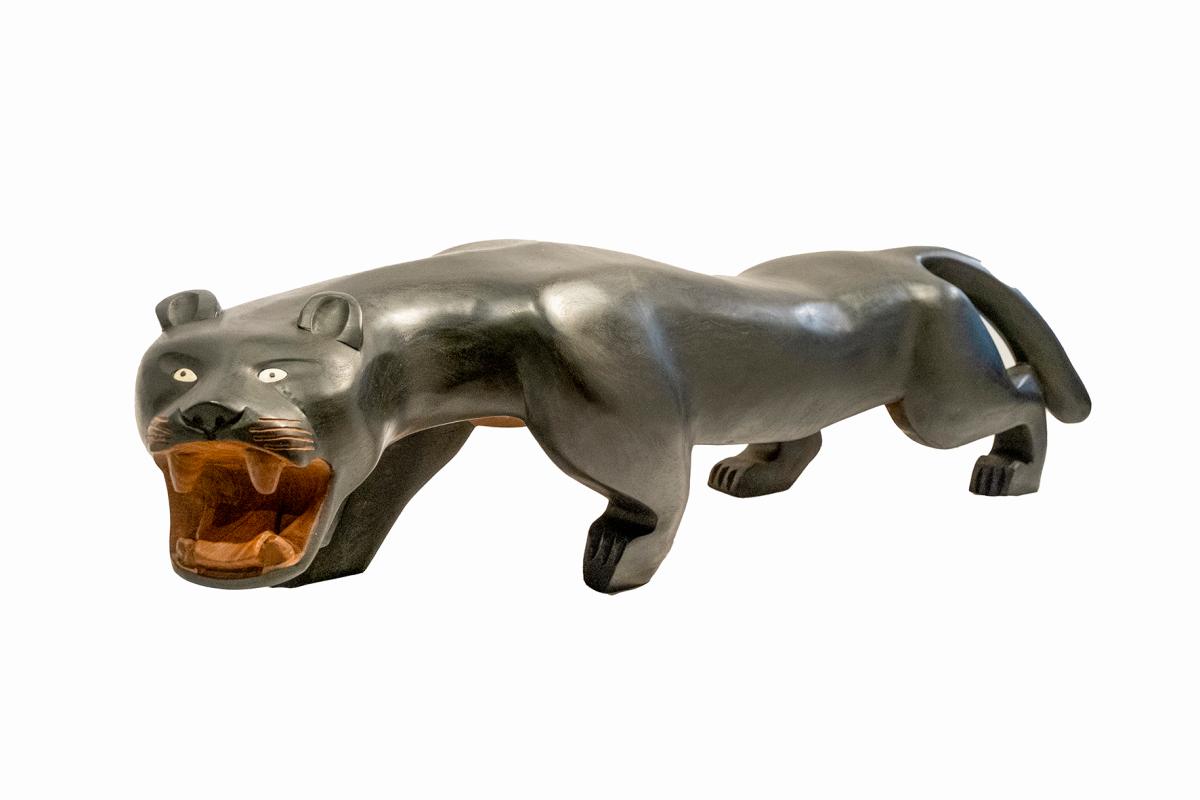Pé Palito Gallery (213 North) displays contemporary collection of indigenous benches
Ancestral Aesthetics: Brazilian Indigenous Art
Sensory harmony materialized in zoomorphic and geometric benches
Unprecedented exhibition in Brasília brings together more than 50 carved wooden benches, originating from six different ethnicities.
Make up this collection, curated by Lucas Rosalino, the artistic richness of 17 young sculptors who create, transform and innovate. Each one with their own way of initialing art, preserving practices derived from ancient knowledge.
In Ancestral Aesthetics: Brazilian Indigenous Art the pieces on display bring new styles, materials, colors, decorations and sizes without losing sight of the elements that identify each animal species, angle and ancestral graphics. in which, proportions and features are maintained.
For the anthropologist, professor emeritus at UNB and senior researcher at CNPQ, Alcida Rita Ramos, the exhibition “is a demonstration of the deep knowledge that indigenous people have of the world around them, regardless of whether they live in villages or not.”
Ariabo Kezo, son of the Balatiponé people, writer and defender of indigenous causes, notes that, for the visitor, “It means being in front of a formidable artistic wealth that invites us to better understand indigenous arts and their profound meanings”, and justifies, “because it is not the production of a single people, but of a diversity made up of various ethnicities”.
Sign up to receive Event News
and the Universe of Arts first!
About the details of each piece, Lucas Rosalino highlights the variety of graphics and their relationships with each animal. “Some people from the Upper Xingu, like the Mehinaku, Trumpets, Kamaiurá, produce specific graphics that represent the boa constrictor’s skin, the teeth of piranhas”. Regarding coloring, he comments that they give even more life to the sculptures because they are made from the products of the land, “like the red of annatto, Tabatinga clay, the black genipapo”, list the curator.
The creation of this exhibition was born from the curator's contact with indigenous cultures, through artists and their works, and his desire to honor indigenous art, “which is a fundamental part of Brazil’s roots, in addition to being able to provide the same overwhelming feeling that I had when having the first contact”. In addition to banks, the set of works presents ceramics, oars and other objects.
The artists present in the exhibition are: Etsiri, Kayanaku, Kulikyrda, Yulupe, Wires, Maybe, Maini e Turuza, da ethnic Mehinaku; Kutatopenu Atakaho e Karapotan, of the Waujá ethnic group; Ropkranse, da etnia Kaiabi/Kayabi; What?, from Ticuna/Tikuna ethnicity; Oncha, Send it to us, da ethnic Mehinaku; Tadashi Tukurevi, from the Aweti ethnic group; e Yauapi, of the Kamayurá ethnic group.
Service:
Ancestral Aesthetics: Brazilian Indigenous Art
Local: Pé Palito Gallery
Address: SCLN 213 Block The Store 9
Opening night cocktail party: 16 November, às 17h
Season: until 16 th December 2023
Visitation: from Monday to Saturday, from 10h30 to 19h
frank and free entry for all audiences
All pieces will be for sale
Information: 61 9269-2602 (Whatsapp)

